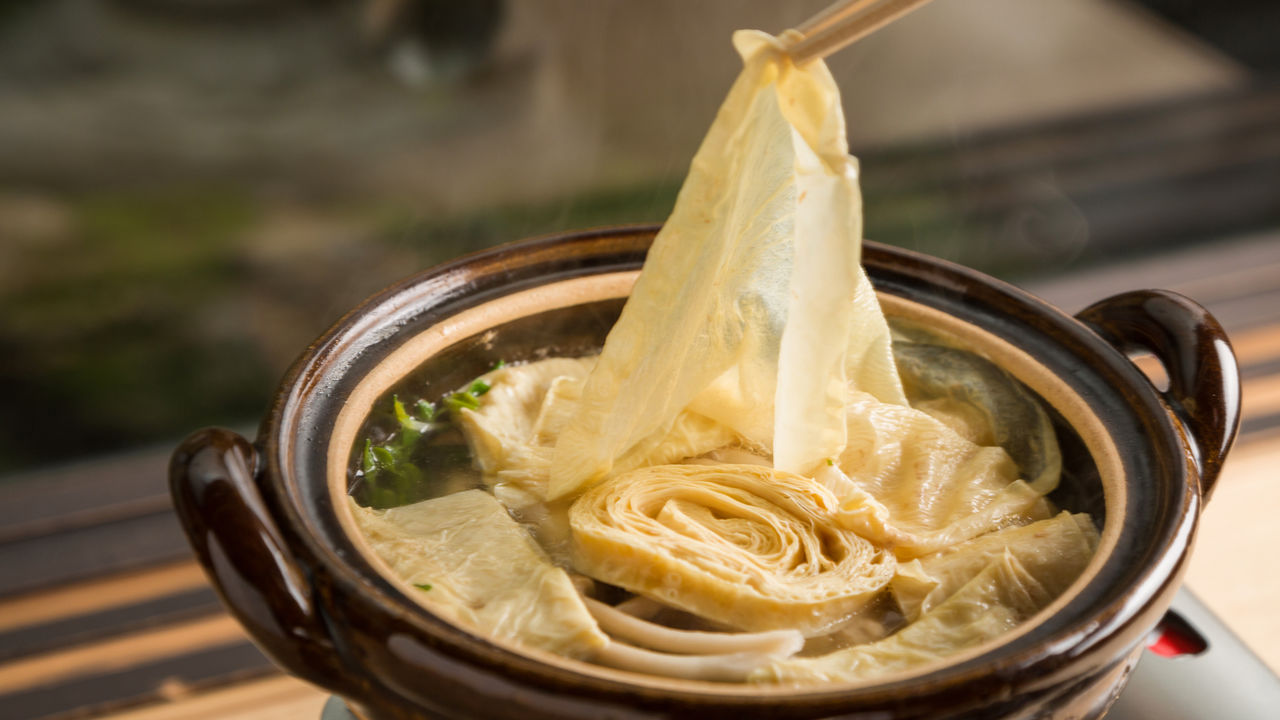
Kyoto’s Senmaruya: Serving Up the Super Food “Yuba”
Guideto Japan
- English
- 日本語
- 简体字
- 繁體字
- Français
- Español
- العربية
- Русский
A Concentrated Package of Soy Nutrients
Japanese cuisine is gaining worldwide attention for its healthfulness and presentation. Nowadays tōfu, shirataki noodles, and fermented seasonings like soy sauce are readily available on supermarket shelves in many countries. One of the latest rises in demand has been for yuba, made from the same soybeans used to prepare tōfu.
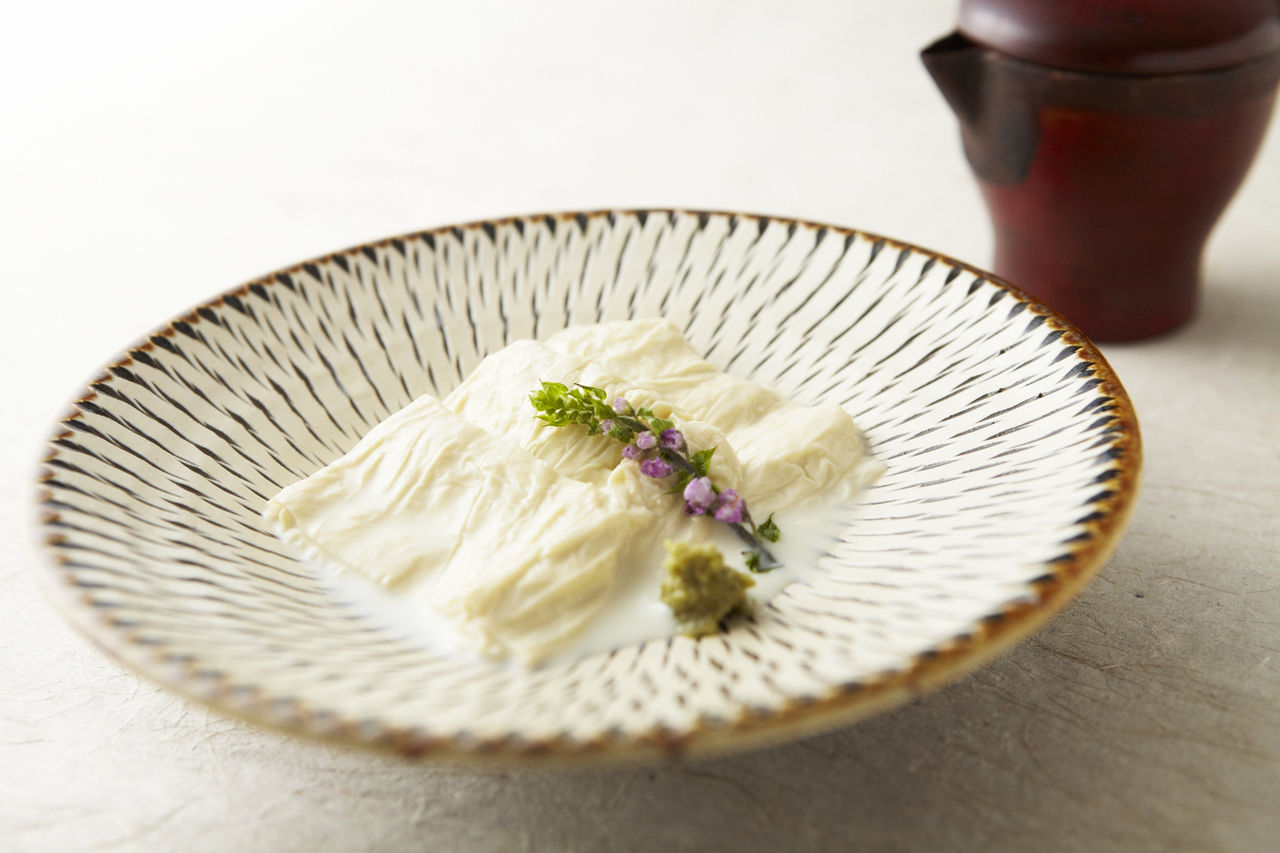 Freshly made yuba, especially when served raw, melts in your mouth with its distinctive umami flavor.
Freshly made yuba, especially when served raw, melts in your mouth with its distinctive umami flavor.
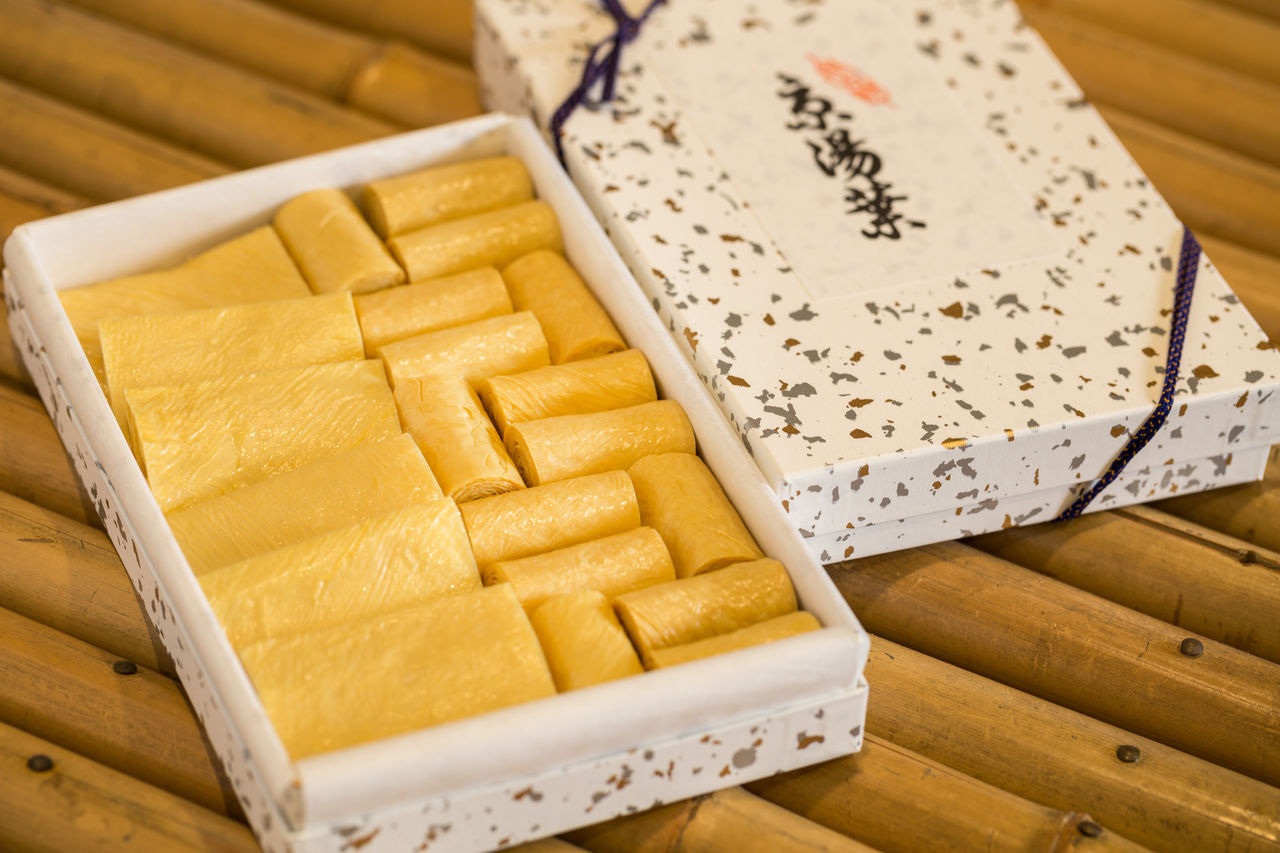 Dried yuba comes in various shapes and sizes.
Dried yuba comes in various shapes and sizes.
First invented in China, yuba is a traditionally processed food made from soybeans. When gojiru (or soy milk) made from ground, filtered soybeans is heated, a skin forms on the surface, just like the layer that forms when milk is heated. This is yuba, prized in its own right as a healthful ingredient to be scooped off and eaten.
This was taught to us by Ochi Tadahiro, the eighth-generation proprietor of Senmaruya, a Kyoto shop specializing in yuba established in 1804. At the Senmaruya cookhouse, artisans still use traditional methods to create this delicacy.
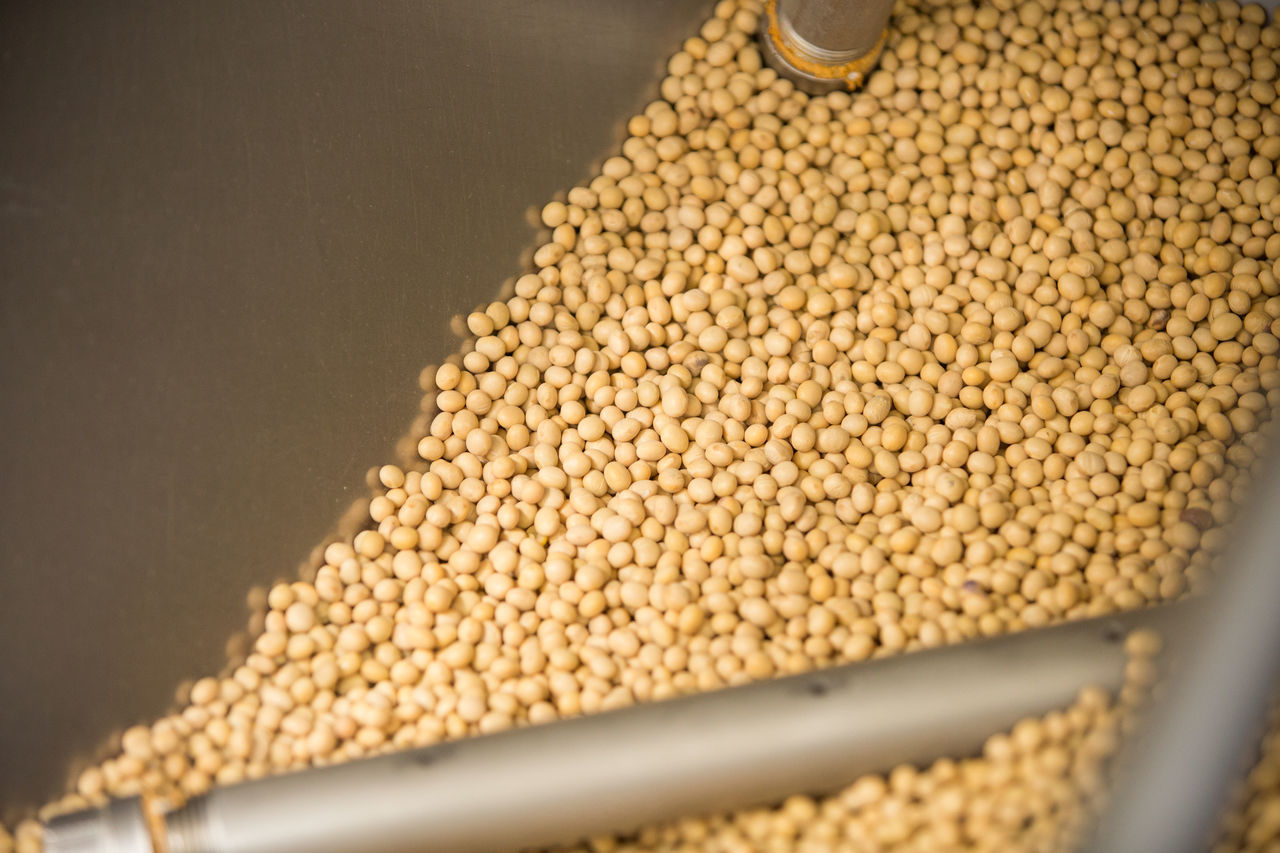 Soybeans are the main ingredient of yuba.
Soybeans are the main ingredient of yuba.
 Heating gojiru and waiting for the perfect moment to scoop the yuba off of the top.
Heating gojiru and waiting for the perfect moment to scoop the yuba off of the top.
About 800 years ago, yuba making was taught to the people of Kyoto by Chinese Zen monks. It rapidly became a valuable source of protein for monks who were forbidden by Buddhist precepts to take animal life, and has since become an indispensable ingredient in vegetarian Buddhist cuisine, as well as everyday home cooking in Kyoto.
“Although tōfu is also derived from soybeans, makers add a coagulant called nigari after heating soy milk to achieve its firmness,” explains Ochi. “Because yuba hardens using only heat and its own proteins, soybeans and water are its only ingredients. It’s no exaggeration to say that yuba is the concentrated deliciousness and nutritiousness of the soybean itself.”
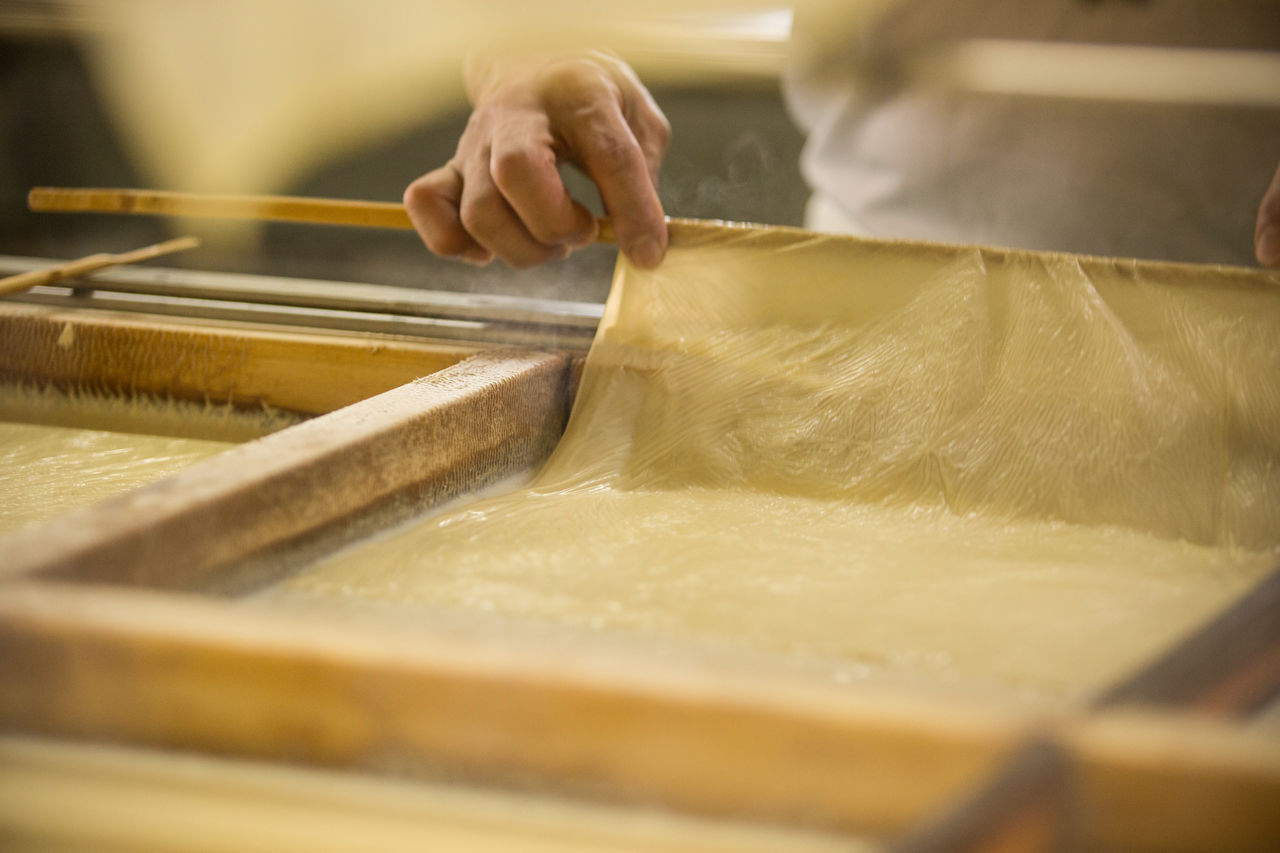 Skill is required to pull unbroken sheets of yuba off of the top of the mixture at just the right time.
Skill is required to pull unbroken sheets of yuba off of the top of the mixture at just the right time.
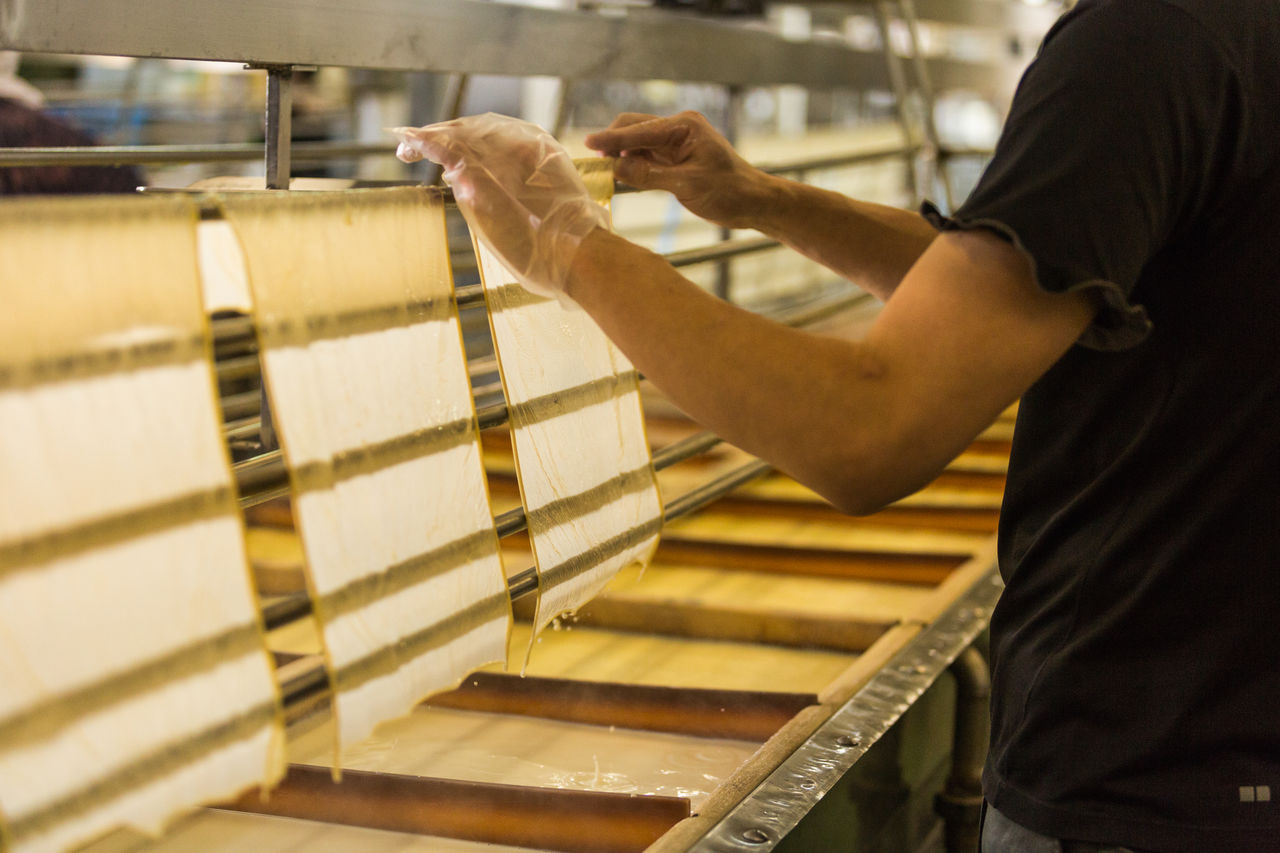 The pale yellow skin is confirmation of the concentrated soybean goodness that yuba contains.
The pale yellow skin is confirmation of the concentrated soybean goodness that yuba contains.
The protein-rich soybean is sometimes called hatake no niku in Japanese, “meat from the fields.” Yuba, too, is high in protein and low in calories, while boasting zero cholesterol.
Ochi extols the soybean’s health qualities. “It contains isoflavones that are highly effective in promoting beauty, its saponins have antioxidant qualities, and its various amino acids are well balanced; it is also recommended for its anti-aging effects.”
The Depth of Dried Yuba in a Casual Hot Pot Lunch
Freshly made raw yuba is the overwhelmingly popular choice, but Ochi is focusing his efforts on dried yuba.
In the era when there was no refrigeration, dried yuba was the mainstream version as a matter of course. Drying is effective for long-term preservation, and the taste and nutrients are packed in, letting diners discern its distinct flavor once the ingredient is added to a meal. Dried yuba is convenient for cooking quickly and easily—just toss it in dashi stock or soup to add rich flavor and protein to the dish. Many people with busy modern lifestyles are giving yuba a fresh look as a versatile addition to their daily diets.
At Senmaruya’s restaurant, Ochi started offering a yuba hot pot at lunchtime in 2017. “I want to show how appealing it is to the younger generation and people overseas.”
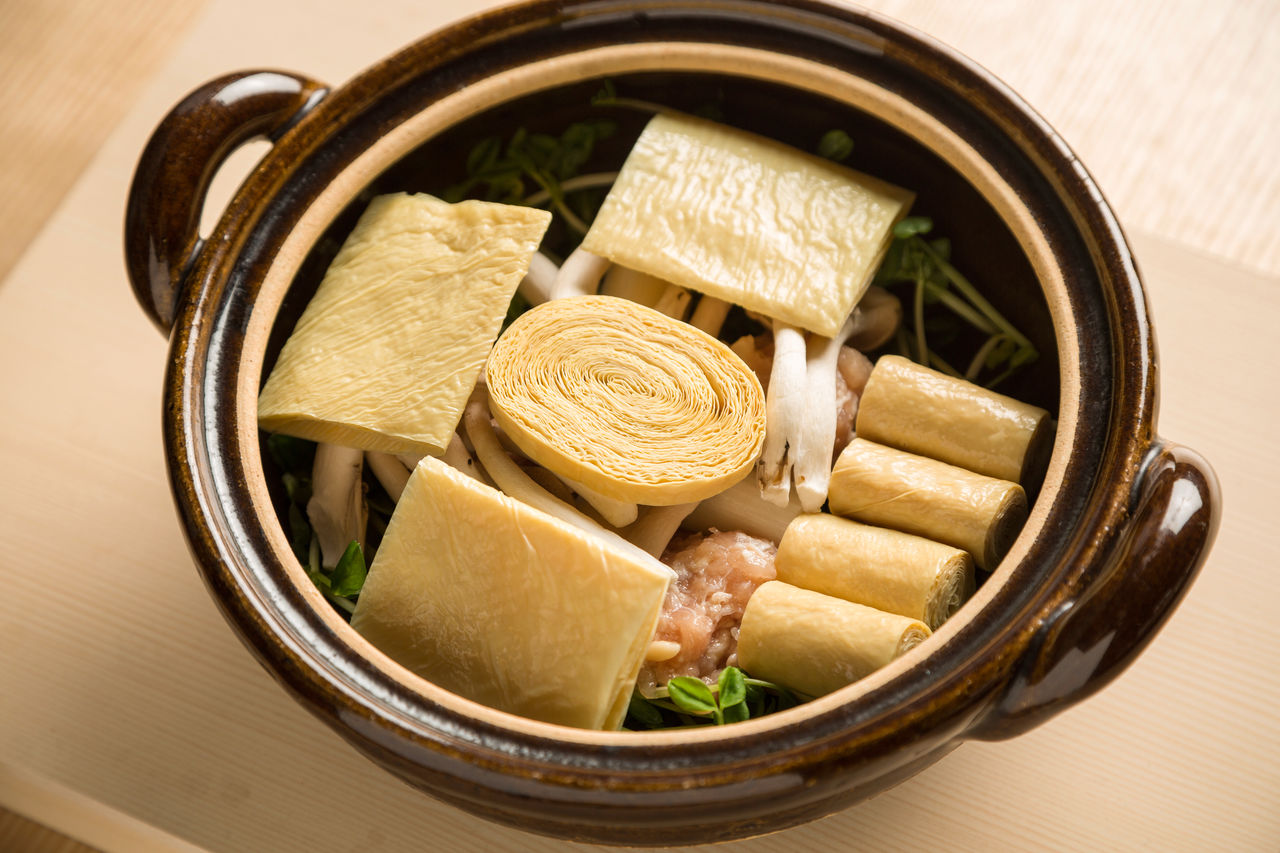 The ingredients are arranged before dashi stock is poured into the pot. Large pieces of yuba are placed on top and the pot is heated.
The ingredients are arranged before dashi stock is poured into the pot. Large pieces of yuba are placed on top and the pot is heated.
Besides dried yuba, the ingredients used are chicken, shimeji mushrooms, negi onions, mizuna (potherd mustard), and other ingredients that can be easily found in most Japanese supermarkets. The stock is simply water with konbu (kelp) seaweed left in it to sit overnight. The stock can be this simple because the delicious taste of yuba, made with good quality soybeans and water, needs no complicated flavors masking its taste.
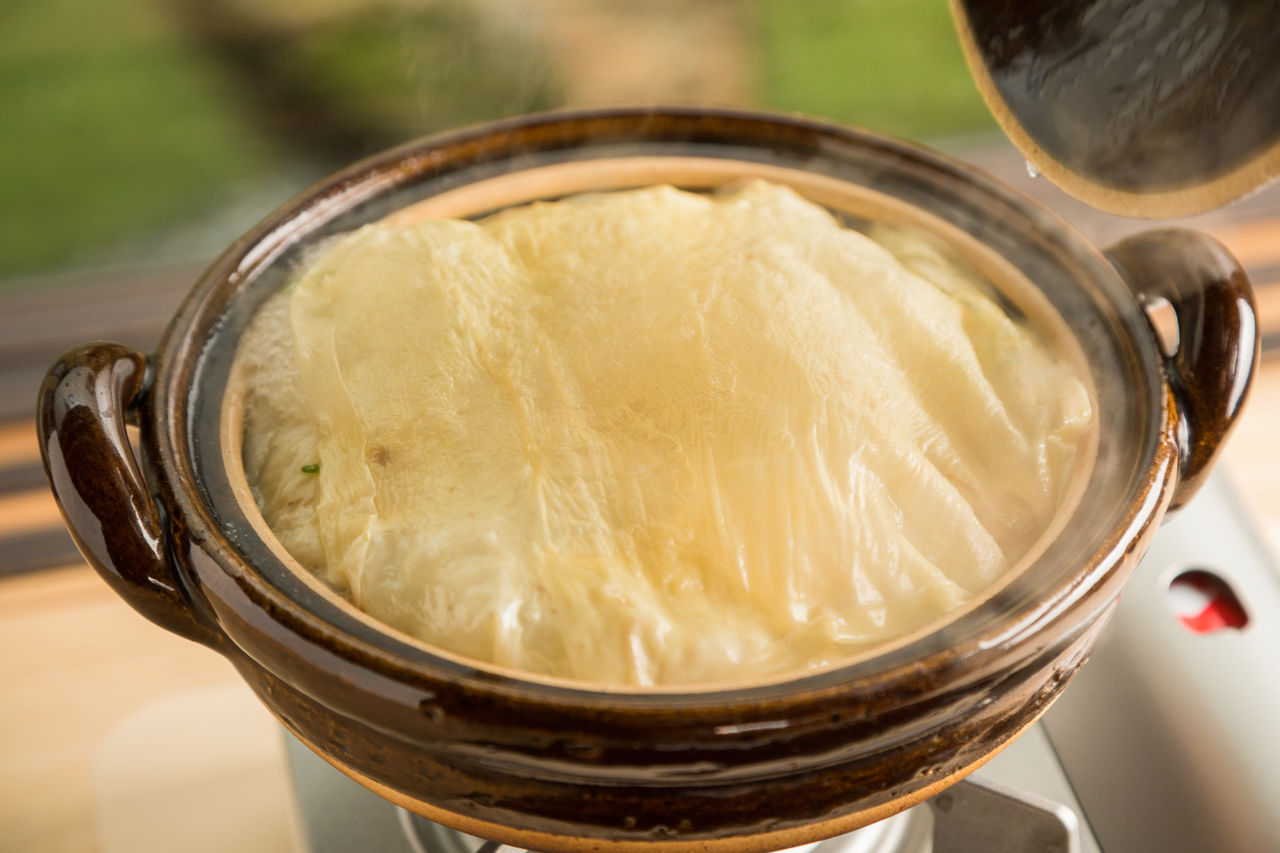 When the yuba balloons, it’s time to eat.
When the yuba balloons, it’s time to eat.
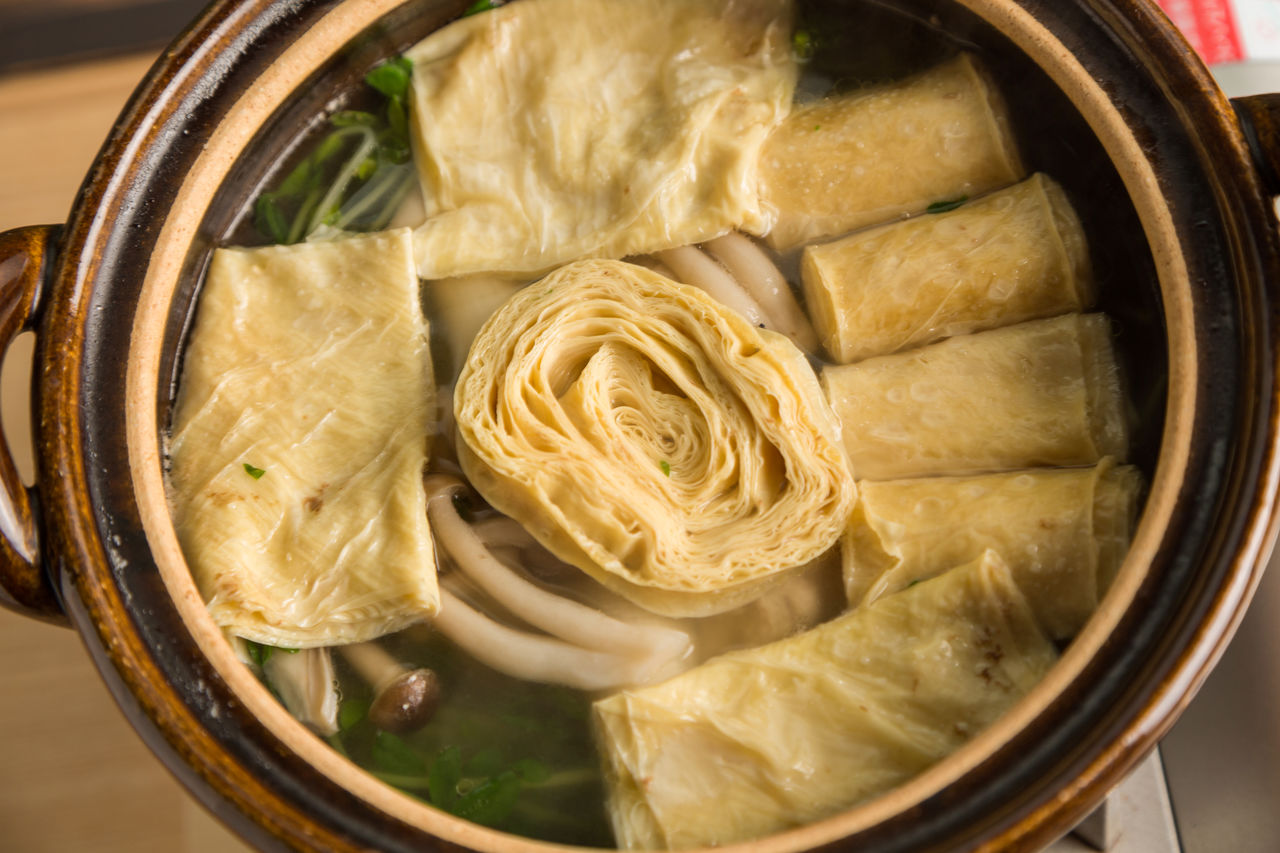 Senmaruya’s yuba hot pot lunch set includes rice cooked with yuba and dessert, all for ¥1,800.
Senmaruya’s yuba hot pot lunch set includes rice cooked with yuba and dessert, all for ¥1,800.
The ingredients from the stew are dipped into dashi soy sauce, flavored with wasabi or grated ginger, for a crisp, flavorful meal. One bite of a piece of yuba that has soaked up plenty of chicken and vegetable broth sends its umami flavor bursting across the palate. The firm, almost plump, texture of quality yuba makes the experience still more outstanding.
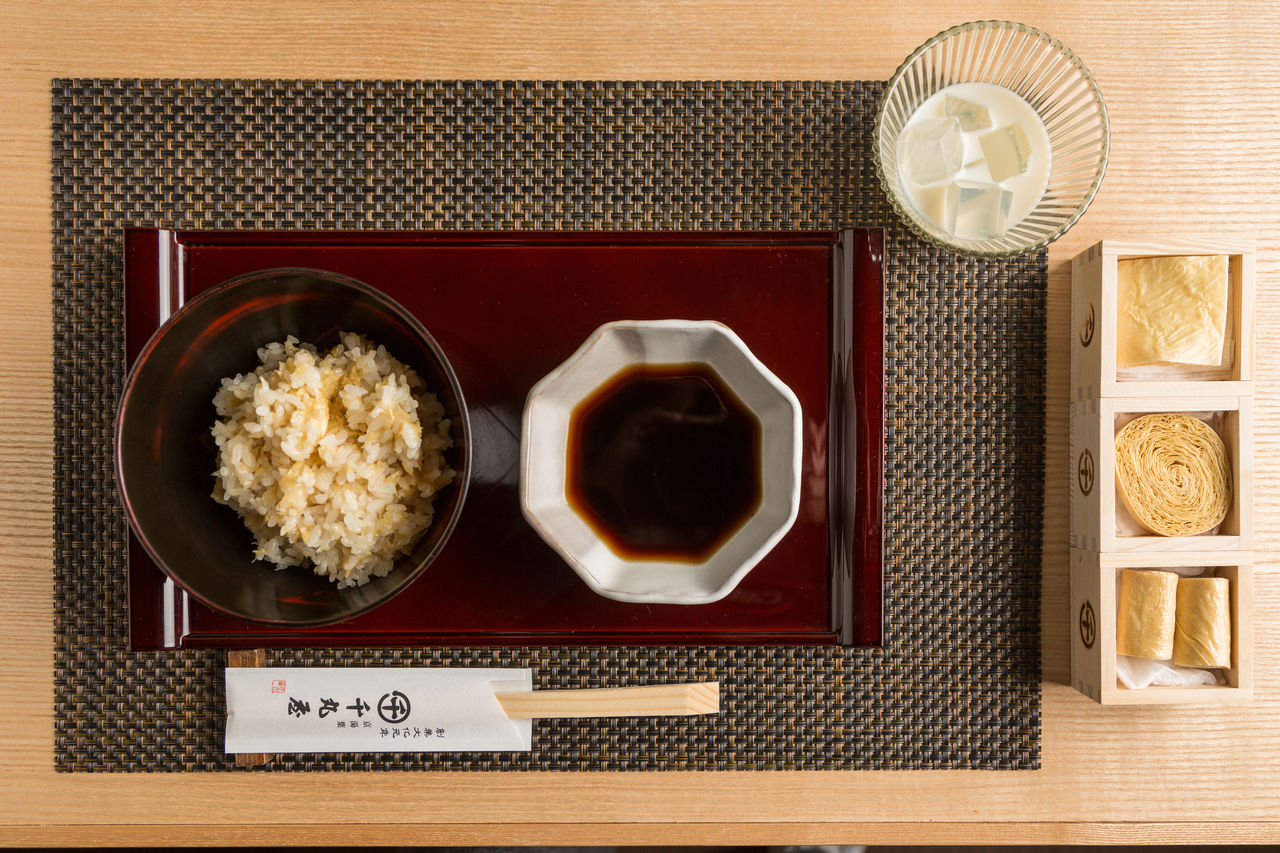 Rice cooked with yuba, servings of yuba to dip in the sauce, and a dessert of gojiru with agar (gelatin cubes).
Rice cooked with yuba, servings of yuba to dip in the sauce, and a dessert of gojiru with agar (gelatin cubes).
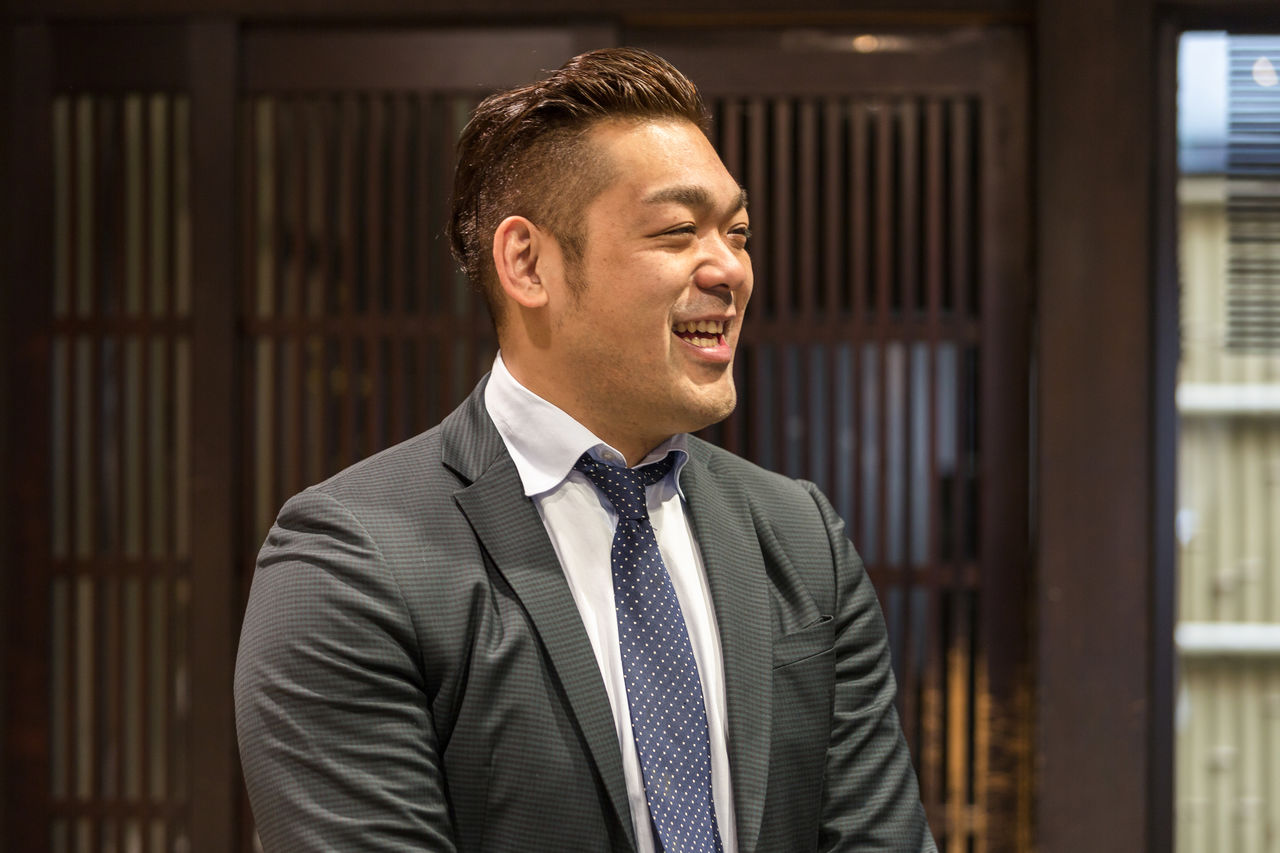 Eighth-generation Senmaruya proprietor Ochi Tadahiro.
Eighth-generation Senmaruya proprietor Ochi Tadahiro.
“Because yuba is made from 100 percent soybeans, it also pairs well with Italian and all sorts of flavorful foreign cuisine," says Ochi. As he explains, it’s delicious as a fine, noodle-like “wound yuba,” served like pasta, or as flat sheets rolled around seafood and vegetables to make spring rolls. And when fried as chips, it’s a perfect accompaniment to alcohol.
At present, Senmaruya is developing a “Japanese-style cereal” using dried yuba for overseas markets. The day that yuba captivates the world, like its cousin tōfu already has, may be close.
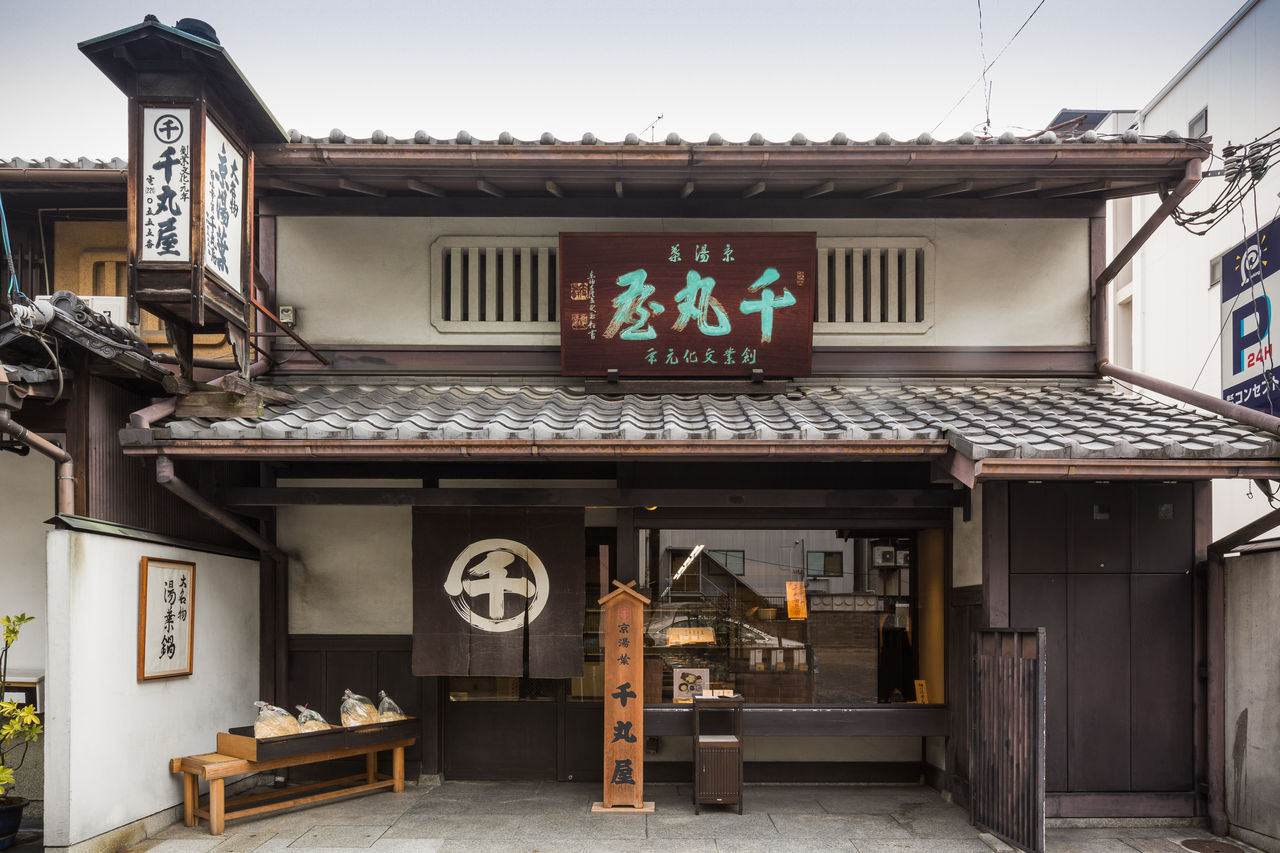 Senmaruya’s head office and attached shop, located close to the Nishiki market in Kyoto.
Senmaruya’s head office and attached shop, located close to the Nishiki market in Kyoto.
Senmaruya
- Address: Sakaimachi-dori Shijo-agaru, Nakagyo-ku, Kyoto
- Official website: http://www.senmaruya.co.jp/ (Japanese only)
- Tel.: 075-221-0555
- Access: 7 minutes on foot from Shijō Station on the Karasuma Subway Line
- Business hours: Sales 10:00 am–6:00 pm Meals 10:00 am–3:00 pm (last order)
- Closed: Wednesday
(Originally published in Japanese on July 10, 2018. Reporting and text by Yamaguchi Noriko. Photographs by Yamazaki Yoshinori.)